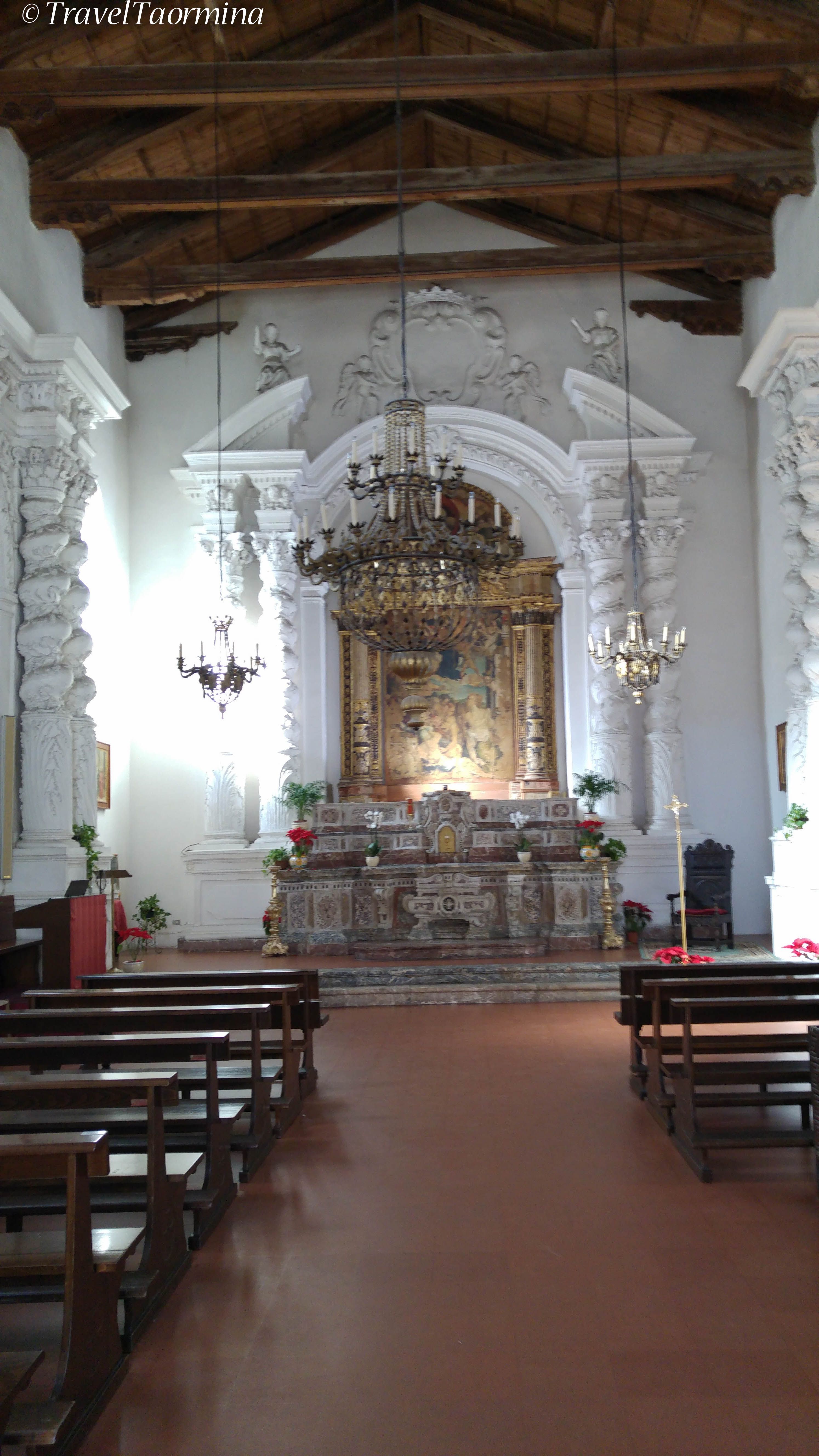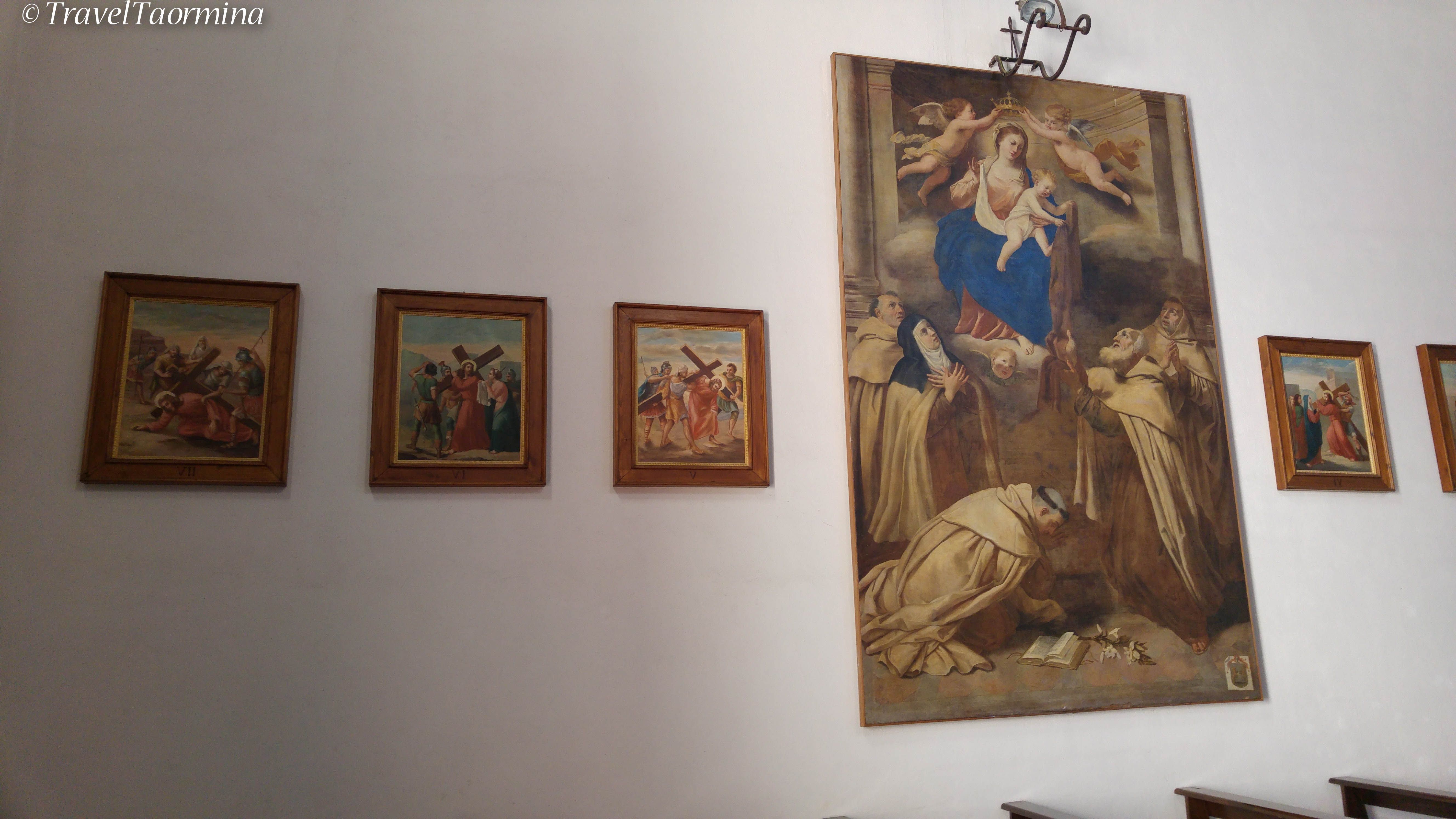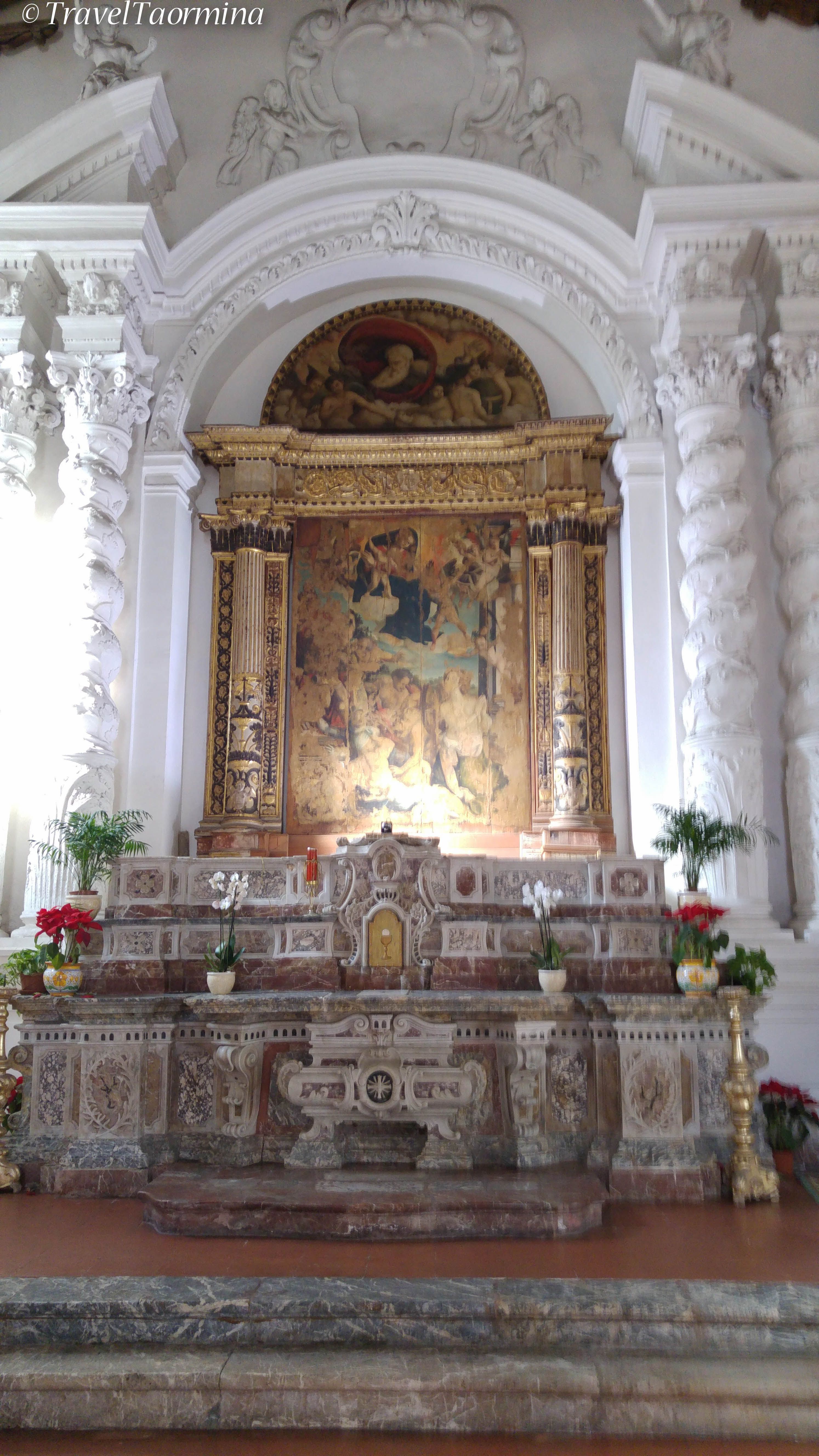Church of Saint Catherine of Alexandria in Taormina
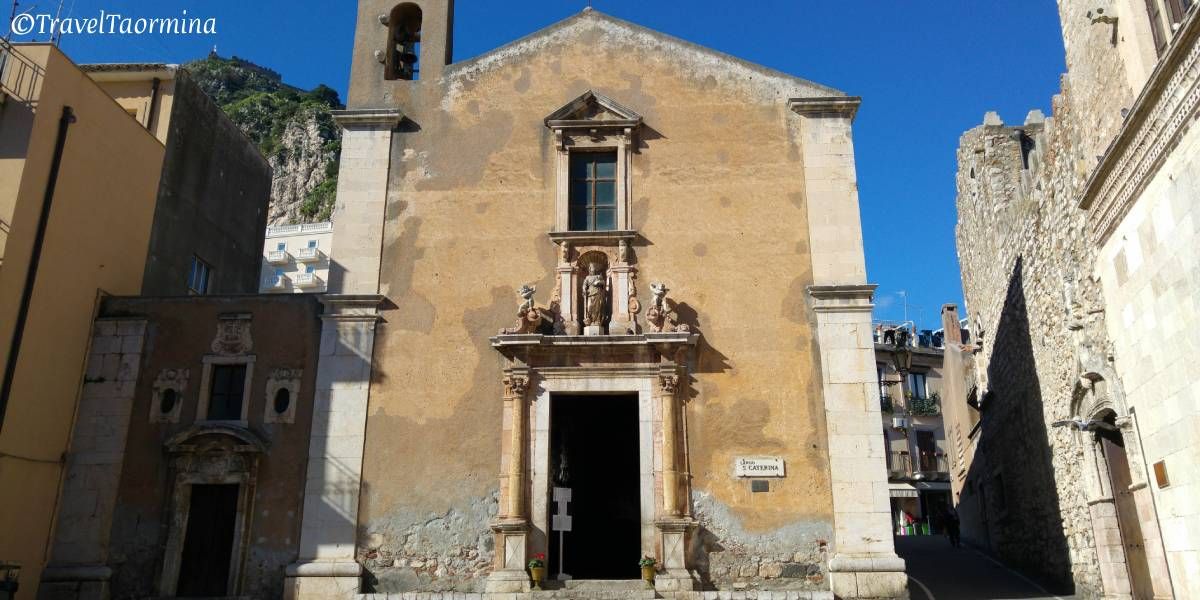
The construction of the present church of Saint Catherine of Alexandria occurred after the Capuchins bought the previous church dedicated to the saint of Alexandria that was outside the walls (the current church of Sant'antonio da Padova).
The certain date of this church construction is not known; we know that the ancient church of Santa Caterina, outside the walls, was sold to the Capuchin Friars in 1610.
As an indicative date we have that which is carved on the tombstone of the ossuary that was on the floor (1663) and that, after the restoration, has been placed in the wall next to the access stairway to the crypt of the church. On the plaque there is this inscription in Latin: "Sit nomen numen divae, et coluisse paretis, omen ut hic cineres, astra petantaiae" (Both the name of the holy divine power and both having honored the parents with the wish for these souls to go to heaven).
The fountain in red marble of Taormina that is in the Sacristy, leads to the top of the arch of the niche this dedication: "Reparatae, Salutis Anno 1787" (Restored in the year of Salvation 1787).
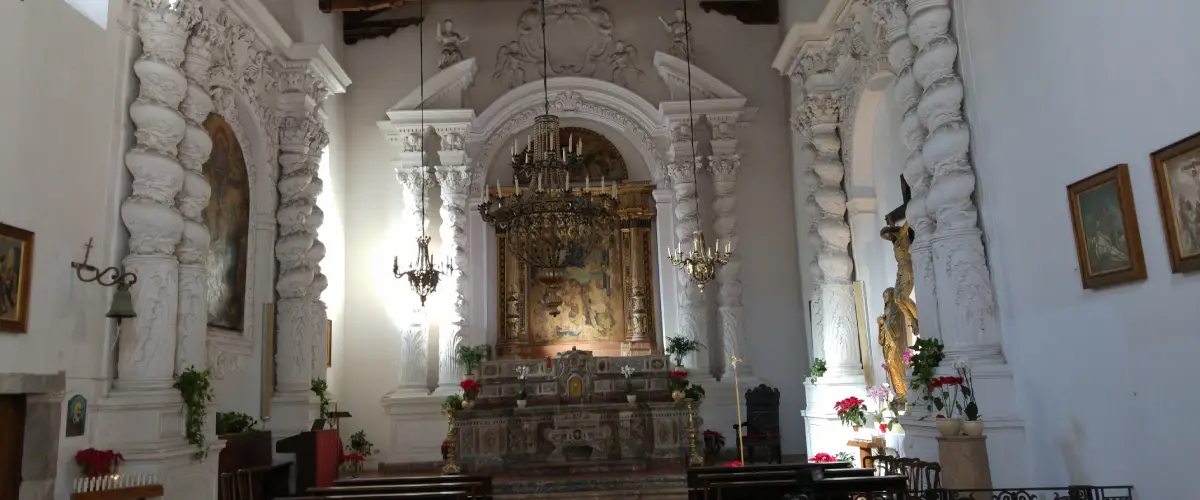
In the church, to the right hand, there is an exquisite marble statue of Saint Catherine. The Saint holds in her right hand the palm branch, symbol of her martyrdom and with the other hand shows an open book reminding us that her superior intelligence combined with diligent study left her exceedingly well-versed in all the arts and sciences, and in philosophy. She also seizes with her right hand a sword that in this case doesn’t want to represent the one used to behead her, but rather, the faith in God she had, capable to defeat evil, the prince of darkness who, laying at her feet, tries to push away the point of the sword from his throat. Saint Catherine is standing on the spiked wheel from the ruined engine used in her martyrdom. On the pedestal you find the date MCCCCLXXXXIII (1493,) and different bas-relives showing Catherine standing between two spiked wheels and two executioners, her scourging, two seraphim’s heads and the coat of arms of the city of Taormina. It is clear that this statue had to be found first in the ancient church of Santa Caterina which was given to the Capuchins, and then was brought to the new church.
The architectural style of the church is clearly baroque. portal is decorated with pink marble of Taormina and embellished at each side with two slim columns with Corinthian capitals, standing on tall bases. Above the portal, in a niche, there is the statue of the Saint Alexandrina between two little angels, each one sitting on the volutes of the tympanum itself. She holds the palm branch and the sword with which she is about to kill a diabolic creature, here represented by a crowned personage with long moustaches. At her left side the unfailing spiked wheel. This other statue is the work that the Sicilian Paolo Greco sculptured in 1705.
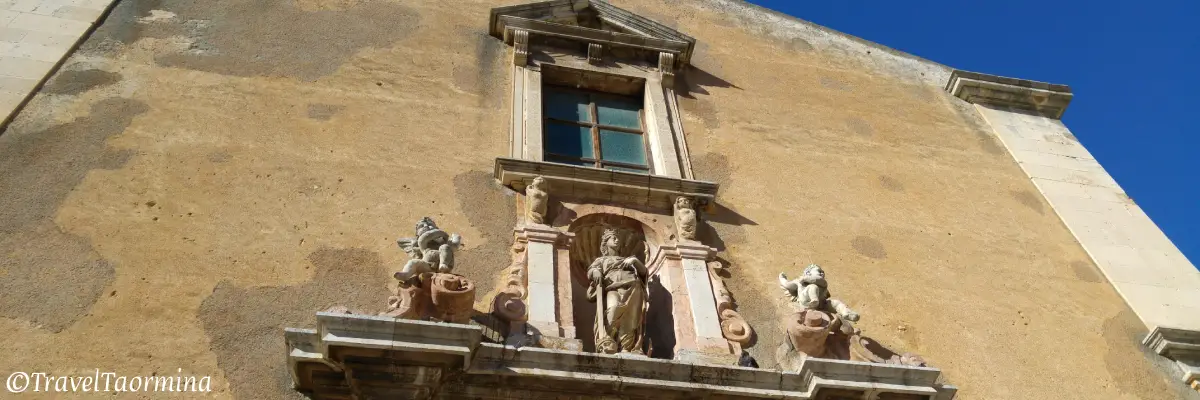
A mini bell tower, incorporated in the façade, decorates the high corner to the left of it and shows a single bell. To the left of the main door there is the door of the sacristy, which low facade is decorated with two porthole windows, decorated with marine shells, while two other shells enrich the door's architrave. At the top, this low facade of the Sacristy shows a bas-relief panel depicting two figures under a cross, and the bas-relief is ruined by time, so we do not understand the meaning of the representation. All the openings of this façade, as well as the bas-relief, are made of Syracuse stone.
It seems that the construction of the Sacristy is prior to the construction of the church of Santa Caterina d'Alessandria; perhaps, originally, it was a chapel on its own, and then it became the sacristy of the new church.
The church of Saint Catherine “intra muros” was built on the top of the ruins of the Roman Theater (Odeon), partially destroying its orchestra and its scene which consisted of the southern colonnade of a Greek temple, some say dedicated to Aphrodite. The interior of the church is a single nave, with an elegant wooden-beam trussed ceiling. On the main altar you can see an imposing painting depicting saint Catherine’s martyrdom, attributed to the Sicilian painter Jacopo Vignerio (XVI century).
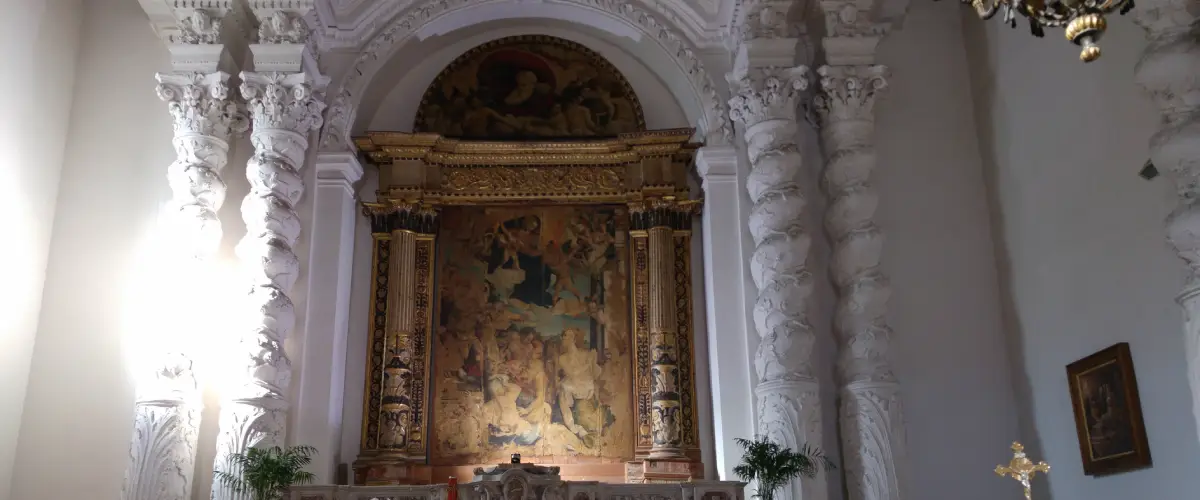
Below the main portal there is a beautiful crypt fully excavated during the recent restoration, in 1977. Inside it they used to preserve and bury, previous mummification, the bodies of the notables and aristocrats of the town.
The restoration has brought out on the right side of the church and under the floor, ruins of walls of the Greek-Roman era, which have been left in sight, next to which was placed the ancient statue of Santa Alessandrina, dated 1493 and coming from the first church of Santa Caterina.
In this church weddings and musical concerts are regularly held.
ADDRESS
Corso Umberto - Piazza Santa Caterina
TELEPHONE: +39 0942 23963 / +39 339 5682372
OPENING HOURS
Dalle 9:00 fino alle 20:00.
RATES
Free entrance.
Related articles
Arabian Necropolis

Palazzo of the Dukes of Santo Stefano

Clock Tower
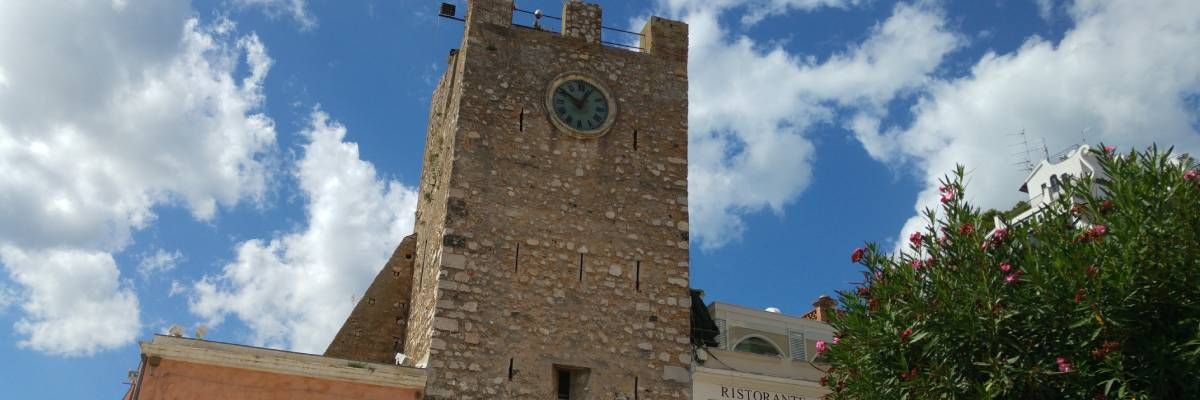

 English
English  Italiano
Italiano 


